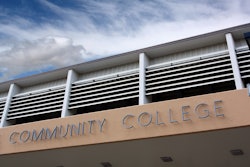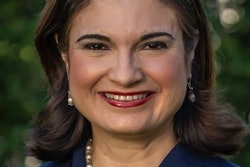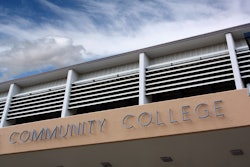Here we go again. George Bush described himself as the “education president” a few years back, and now President Bill Clinton seeks to top him at his game. During the 1997 State of the Union address, Clinton forwarded a number of education proposals, all which have special implications for those who could be described as “educationally disadvantaged.” At the same time, the light-touch federal approach that Mr. Clinton has suggested may mean that some states will embrace his educational reforms with more fervor than others.
Higher education benefits most from the tax credit of $1500 that President Clinton has pledged to provide, along with the tax deduction of $10,000 for college tuition. To address concerns that these credits and deductions do little for the low income, the President has also proposed expanded Pell grants for lower-income students. Further, the president’s exhortation that every student who wants to should have a college education, especially through the community college system, is a good one. But the HOPE scholarships he proposes may not offer sufficient resources to move every student to higher education.
The higher education pipeline benefits from efforts to improve K-12 education, with proposals that range from the certification of 100,000 more “master teachers to the enlistment of a million volunteer tutors. Given the physical organization of inner city schools, school construction is a laudable goal for an administration that has targeted so many dollars toward prison constructions. Less laudable is the expansion of charter schools in the name of “choice.” How will these chatter schools be funded? What will they teach? Are there tax implications for this form of educational organization?
The State of the Union Address, though, was vintage Clinton. There was fluff and rhetoric, but also a set of solid proposals in his speech. His goals–that every child be able to read by the third grade, that every home and classroom be connected to the Internet by the year 2000, and that the communications potential of the Internet include hospitals and other sites–are important.
Education is important, but it is a necessary–not a sufficient – condition to erasing the gaps between African Americans and whites, and to leveling playing fields in employment and access. As animated as the president was about education reform, he was somber about issues of our nation’s racial divide. His rather pensive tribute to diversity was marred by his own misreading of history and that, perhaps, accounts for my look askance at the entire State of the Union address.
Said President Clinton: “America has always been a nation of immigrants. From the start, a steady stream of people in search of freedom and opportunity have left their own lands to make this land their home. We started as an experiment in democracy fueled by Europeans. We have grown into an experiment in democratic diversity fueled by openness and promise.”
Does this statement reflect our nation’s reality? We are a nation of both voluntary and involuntary immigrants. Some of us weren’t in search of “freedom and opportunity,” we were snatched from a home country to serve those who sought to exploit us. The democratic experiment fueled by Europeans was flawed at its very core because the experiment relied on the service of some for the survival and the pleasure of others.
To be sure, President Clinton was editing history–and there are those who would have chafed had he spoken truth in the context of diversity. But in coming up with an inclusive historical myth, he gave the history of African American presence in this country short shrift. And then he topped it off with a Biblical verse, as if that cleans it up. Not!
Like presidents before him, Clinton ended his State of the Union Address with nods to the various stripes of the rainbow–the Chinese American governor of Washington state, the Mexican American Congressman who was recently buried, the African American student whose accomplishments were touted. The inclusive rainbow approach, tied in with the earnestness of Clinton’s rhetoric, makes us all nod in agreement when he exhorts us to be shapers–not observers–of events. Still, in the arena of racial reconciliation, the president has fallen far short of providing exemplary leadership.
For example, in his quest to deal with education issues, President Clinton might well take on the education of our nation about racial oppression. It is not helpful for him to use the immigrant metaphor without explanation. It might be most helpful for him to take on the task of constructing a monument to African slaves somewhere on the Mall in our nation’s capital. We’ve built statues to veterans, Holocaust victims, and others. But our slave past is ignored. The ignorance the country’s racial history is compounded by these immigrant statements white politicians benignly throw into the mix, as if the price of the ticket on a ship was the same if one came as cargo or as a passenger.
President Clinton says that he placed his hand on the biblical verse Isaiah 58:12 when he took his oath of office on January 20. The verse, which is both challenging and healing, reads, “Thou shalt raise of the foundations of many generations, and thou shalt be called the repairer of the breach, the restorer of paths to dwell in.” Isaiah speaks to the reconciliation that this President desires, but where is the voice for truth?
President Clinton took a first step with aggressive educational agenda. Unfortunately, though, he miseducates when he uses historical shorthand to give short shrift to the challenges that involuntary immigrants have had to juggle in this “immigrant nation.”
COPYRIGHT 1997 Cox, Matthews & Associates
COPYRIGHT 2004 Gale Group
© Copyright 2005 by DiverseEducation.com
















